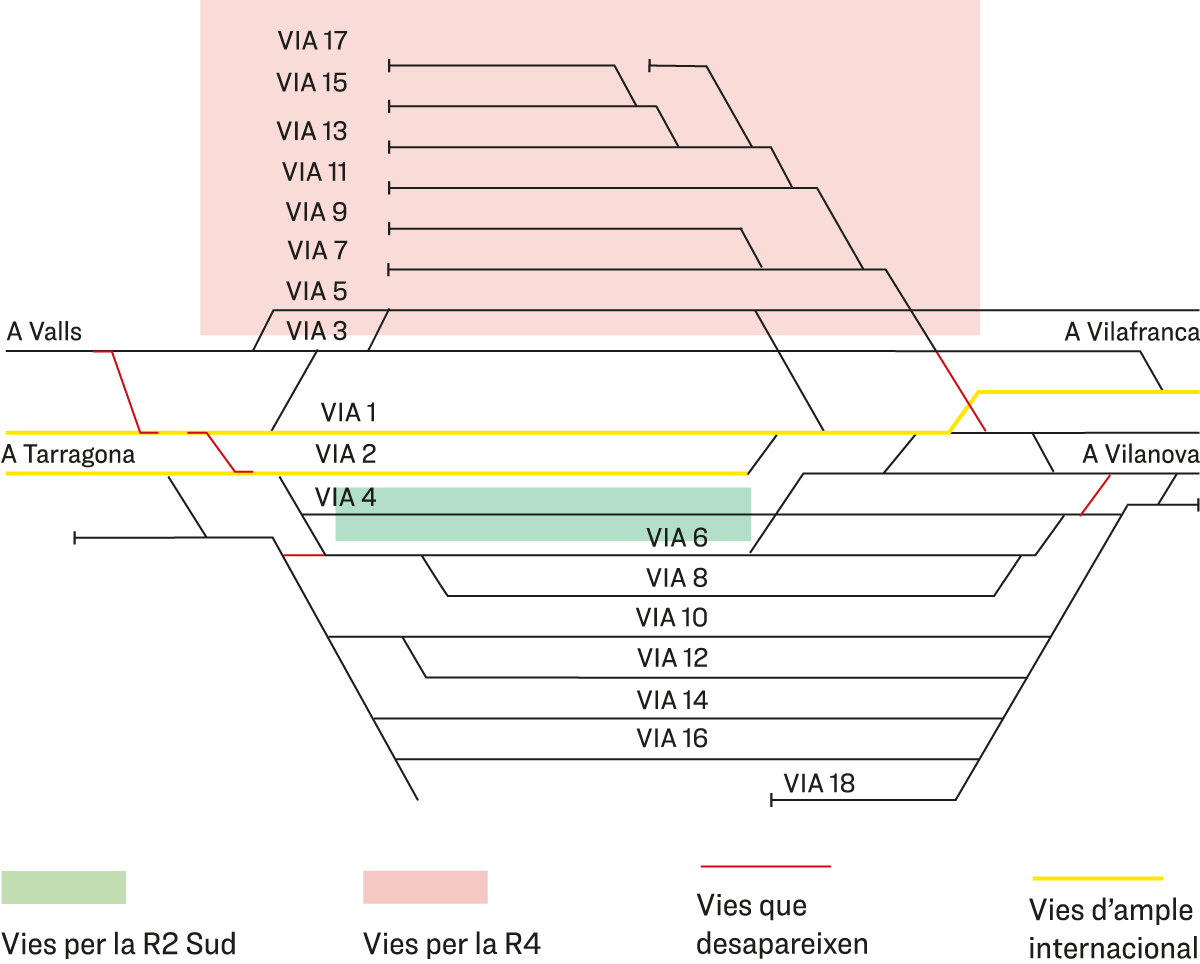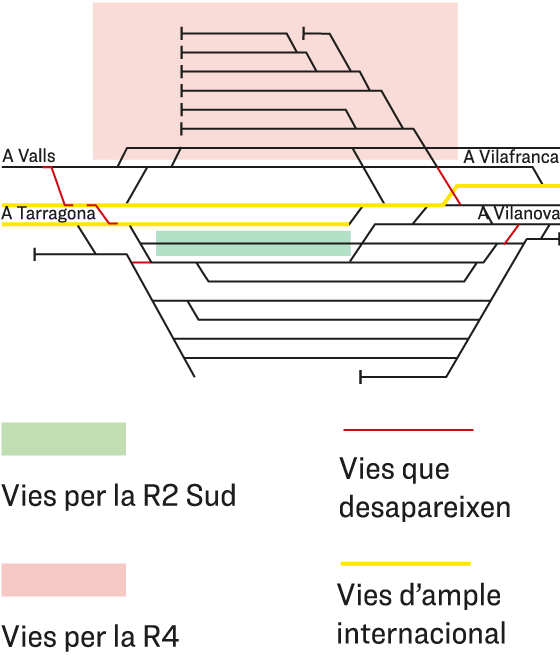"It's a botched job": problems predicted for commuters with the new Sant Vicenç de Calders station
User platforms and experts warn that the design of the Mediterranean corridor at this point will severely limit the passage of trains.


BarcelonaThe Mediterranean Corridor works that Adif is carrying out in Sant Vicenç de Calders since the fall of last year Not only are they generating service interruptions and disruptions, alternative plans, and incidents: the works are also worrying experts about the final outcome they will have when they are finished. Various platforms defending users and academics consulted by this newspaper fear that, once the works at this station are completed, the result will be "worse for users" and that a "bottleneck" will be created that will greatly complicate operations in the area.
The works on the southern corridor are being carried out to install a third wire—that is, a third rail in the middle of those currently in place—which should allow both conventional trains (which operate throughout the country, with the so-called Iberian gauge) and Iberian van trains to circulate on the same track. narrow gauge, those of international gauge). In this way, the Mediterranean Corridor, an infrastructure that is considered economically capital, will be able to transport goods from Spain directly to the rest of Europe.
The problem, according to the expert association Promoción del Transporte Público (PTP), is that "the design is terrible," "a botched job." The project, which was conceived years ago, they say, has not taken into account that this station functions as a key communications hub in Catalonia, where commuter, regional, and freight trains meet. They point to two key aspects.
A questionable design
The first is that the project foresees a single-track section at the northern entrance to the station—on the branch line that goes to Vilafranca and connects with Castellbisbal, Martorell, and the R8 towards France—(see infographic). "This means that when a train passes through this section, nothing else can pass," explains Carles Garcia, engineer and vice president of the PTP. He adds: "Freight trains are long and run very slowly at these points, because of the station and many switching points. This will mean that no other train can pass for about three or four minutes; it's a very important operational factor," he emphasizes. "We don't understand why they did it this way," he reflects.
From the area, Anna Gómez, spokesperson for the Dignity on the Tracks platform, agrees. She emphasizes that the fact that passenger and freight trains will compete on this single-track section will create "a bottleneck" that will strain and limit passenger trains. "Not only will operational capacity be lost at the station, but the R2 Sur line will be quite crowded," she points out.
The second key problem affects trains on this line: the R2 Sur. Beyond the bottleneck that can be created by the passage of passenger and freight trains (with different gauges) on the same track, the works also plan to eliminate various sections of track that allowed trains to change platforms to move aside or even park (indicated in red in the graphic). One of the sections being removed is precisely the one that allowed trains on the R2 Sur to park on the platforms located on the mountain side of the station. "As this section, which allowed trains from the R2 Sur to interchange upwards, they can now only stop on one platform, number 4," warns Gómez.
Thus, a line that frequently uses the R2 Sur will go from having three tracks for rotating trains to only one. "If one of these trains is late, for example, or has a problem, it will stop on track 4, but... what if two arrive? The second will have to wait on the main tracks or on another track where it wouldn't be supposed to," argues Garcia of the PTP. With this change, the tracks on the mountain side of the station will be exclusively for R4 trains, while the remaining tracks, those on the sea side, will continue to be unusable because they don't have platforms equipped for passengers: they are the tracks currently used by regional trains that don't stop at this station.
Adif defends itself
The criticism of the project is clear: the final configuration will be less flexible than the current one and will generate greater operational difficulties, which will limit passenger trains. "It's incomprehensible. I daresay that all this planning dates back six or seven years, when the reality was very different, and if they could save some money, even if it meant complicating operations, they did it," says the vice president of the PTP regarding the decisions made by Adif, the infrastructure manager and commissioner. "The third rail in particular has been a serious mistake from the beginning, and we're seeing the consequences in problems like this one in Sant Vicenç de Calders," add other voices from the same sector at the ARA. Furthermore, both the PTP and Dignidad a las Vías agree that the problem will worsen at this point because there will be more and more freight traffic by rail and also a greater need to transport more passengers with conventional and high-speed trains, with the liberalization of the sector.
For its part, Adif maintains the opposite: "The actions that have been carried out will increase the operability and flexibility of the existing infrastructure and will promote the fluidity and reliability of rail traffic while maintaining the current mixed traffic of freight and passengers," they assert. Adif highlights "the enormous effort" that the company claims to be making to complete the works on one of the "most important junctions in the entire country." When asked by this newspaper, however, at the time of going to press, Adif had not yet assessed any of the technical details related to the elimination of one of the sections that allowed trains on the R2 to interchange tracks, nor had it responded to questions related to the fact that there is a single-track section over which they will have to combine.
"The solution is not optimal," agree both academic engineers and experts from the PTP and Dignidad en las Vías. "We don't know if it's a cost issue or a lack of technical rigor, but it's a clear example that, despite work being done, the station still has shortcomings. More work will be needed to address them," the PTP concludes.



